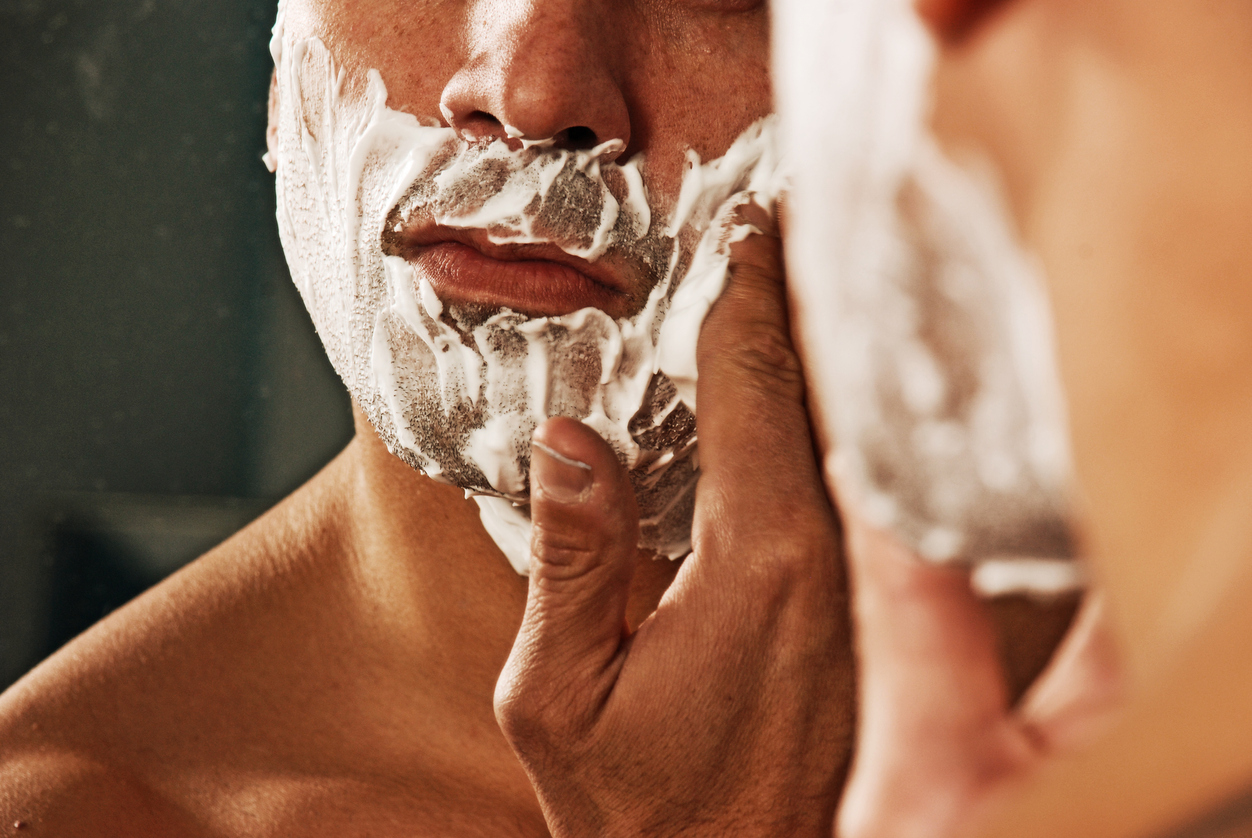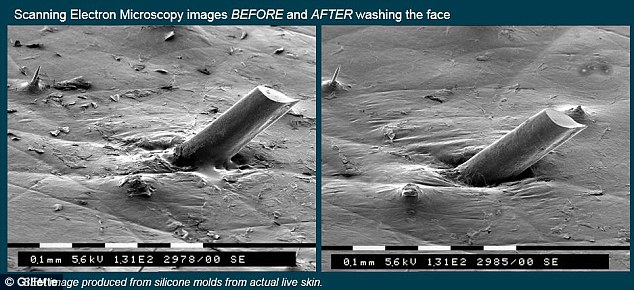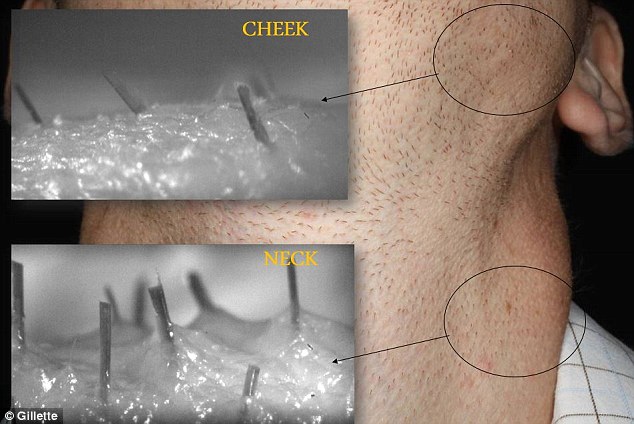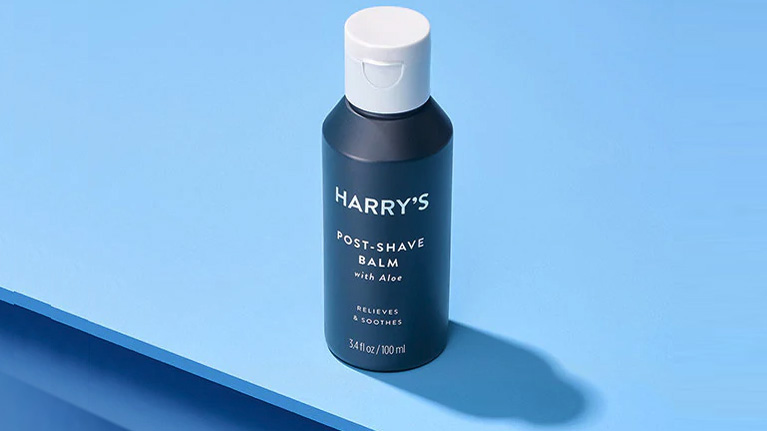
How to shave your face, head and balls like a pro, according to science
A principal scientist from Gillette has revealed how to shave based on the science of razors and hair – and her tips apply to your face, legs, and balls
You may have been taught by your Dad, your brother, or even YouTube, but chances are if you were to do a straw poll, your approach to shaving will be different from each of your mates’.
This is because the skill tends to be passed down through generations, which also means bad habits are passed down as well.
To help you learn how to shave like a pro we’ve spoken to a principal scientist from Gillette. She’s revealed the science behind how to shave, including how hairs ‘behave’ and why washing the skin first will help with shaving rash. She’s also explained why you should never, ever tap your razor on the sink.
FURTHER READING: Best men’s razor UK: Our pick of tried-and-tested razors for men
How to shave, according to science
 Gillette
Gillette This image shows facial hair being roughly cut when it’s dry. When hair is dry, it can have the same strength as copper wire which makes it difficult to cut cleanly. When hair is wet, it swells and becomes softer to cut
For more than a decade, Dr Kristina Vanoosthuyze has worked in Gillette’s Shaving Technology area at the Innovation Centre in Reading.
MBMAN TOP TIPS
Make sure blades are not old or dull: As a general rule if the razor begins to drag or doesn’t cut as closely as before, replace the blades
Never tap your razor on the side of the sink: Tapping the razor causes the blades to misalign. This affects cutting quality and how long the blades will last. Instead, rinse the razor with water and shake off any excess.
She’s watched thousands of men shaving in that time, via a filming rig consisting of magnifying lenses, high-speed cameras, and high-intensity lighting.
This footage has revealed a whole host of insights including the fact that beard hairs are, on average, a tenth of a millimetre in diameter.
The hairs measure around 130 microns in diameter, when dry, but when they’re hydrated this expands to almost 150 microns. This increases the surface area and means you’re more likely to cut it the first time around.
On the cheek, your hairs resemble the shape of an egg, while on your chin they are wider on the underside than the top.
The hairs of the neck look similar to those on the chin but are thicker and more robust. Plus, the skin on the cheek is also flatter than the raised bumps on the neck.
Based on all of this footage and her knowledge, Dr Vanoosthuyze has put together a five-step shaving routine that will guarantee a close shave every time – whether you’re shaving your face, balls, legs, or head – and reduce the chances of irritation and shaving rash.
Step 1: Wash your face (or balls, legs, head, etc)
 Gillette
Gillette
Before you even think about reaching for your razor, make sure you wash your skin with a gentle cleanser. Cleansing the skin not only removes dirt but it swells and softens the hair. This also means you’re less likely to get bacteria into your pores or any shaving cuts you make. This significantly reduces the force needed to cut the hair, too. Plus, when your skin is hydrated, it’s plumper, which reveals more of the hair. It’s win, win, win, win.
We recommend the Bulldog Sensitive Facial Wash (£4.50) and the CeraVe Hydrating Cleanser (£9.50). Alternatively, look for any natural cleanser designed for sensitive skin – you don’t want to irritate the skin with harsher cleansers before you’ve even started shaving. What’s more, if you’re shaving down there, you need something gentle that won’t cause stinging or worse!
“Allowing water to penetrate the hair is key for a comfortable and close shave because dry hair is difficult to cut,’ said Dr Vanoosthuyze. “In fact, dry hair can have the strength of copper wire. When hair hydrates, it swells and becomes easier to cut so, men should wash the face and neck with a mild cleanser before the shave. Or at least take a shower before the shave and not the other way around.”
FURTHER READING: Best face mask for men
Step 2: Apply plenty of shave gel
Dr Vanoosthuyze recommends using a gel. This is because it helps the razor glide more smoothly over the skin. It also creates a protective anti-friction layer.
Shaving foams will also do the job. Using shower gel or soap is better than using no products but it’s not advisable. Shaving gels and foams hydrate and moisturise, whereas shower gels and particularly soaps can dry out the skin.
We recommend Bulldog Sensitive Shaving Gel (£3.50) and the ManCave Caffeine Shave Gel (£4.99). If you’re looking for advice on how to shave your balls, you can also opt for a shaving gel or foam designed specifically for sensitive areas. The best we’ve used is from Australian Bodycare called IntimShave (£9.99). It’s pH balanced and uses natural ingredients, but is more expensive. The addition of Tea Tree Oil can also help reduce the number of shaving spots.
Step 3: Shave with a multi-blade razor using light strokes
 Getty Images/iStockphoto
Getty Images/iStockphoto
Although there has been a slight return to the single-blade razors of old, Dr Vanoosthuyze claims that her years of research have determined that a multi-blade razor is the way to go.
She added that according to electron microscopy videos she’s studied, the first blade pulls the hair up, the second cuts it, the third blade acts in a similar way to the first, and so on. Gillette also offers a vibrate function in some of its razors that helps to further lift the hair and reduces the friction caused by the blades.
She also said that the razor should do the work. “The closeness of the shave is largely determined by the quality and design of the razor, not by how hard you press,’ she explained. “The best way for a close, comfortable shave is to use gentle strokes. The razor should do the work, not you.’
Step 3: Change direction
 Gillette
Gillette The hairs on your cheek are different from those on your neck, as are the hairs on your chin and so on. This means you have to change direction while shaving to make sure you catch them all
A common question we’ve been asked is whether you should shave with the grain of the hair, or against it. The simple answer is both – and you should switch it up as you shave.
“Facial hair tends to grow in different directions, so even if a man thinks he’s shaving with the grain, some hairs will still unknowingly be cut against the grain,” added Dr Vanoosthuyze.
This means that shaving in one direction on the cheek may not have the same effect on the neck. “As a general rule, most men find using light strokes and shaving first in the direction of the hair growth. They then follow with upstrokes. This provides the closest, smoothest shave with good skin comfort.”
Step 4: Rinse with warm water and then cold
Once you’ve finished shaving, use a flannel or reusable face cloth to gently remove the excess shaving gel and any leftover hair. You can then splash your face with warm – not hot – water, before following it up with cold water.
The warm flannel soothes the skin and opens your pores. When you then splash your face with warm water, it rinses anything lurking in the pores and on the skin. The splash of cold water than closes the pores and reduces redness and irritation.
Step 5: Use aftershave or moisturising lotion
 Harry's
Harry's
‘A good moisturiser will leave the skin soft and smooth. It will also help maintain the skin’s natural moisture barrier,’ continued Dr Vanoosthuyze. This doesn’t have to be an aftershave but aftershaves typically contain alcohol that acts as an astringent. This helps sterilise the skin and provides a barrier against infection. This is also what causes them to sting.
If you have sensitive skin, it’s best to opt for an aftershave balm and the best we’ve tried have been Harry’s Post Shave Balm (£7) and the Jack Black Post Shave Cooling Gel (£21). However, this can be any product containing moisturiser to rehydrate and comfort the skin.








